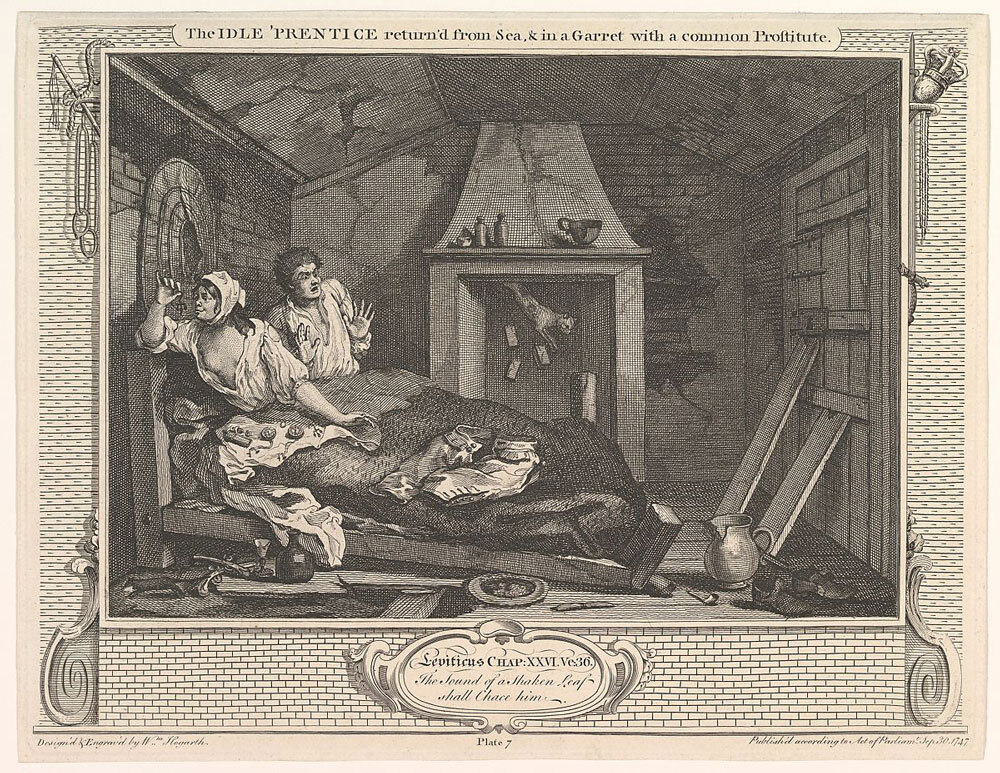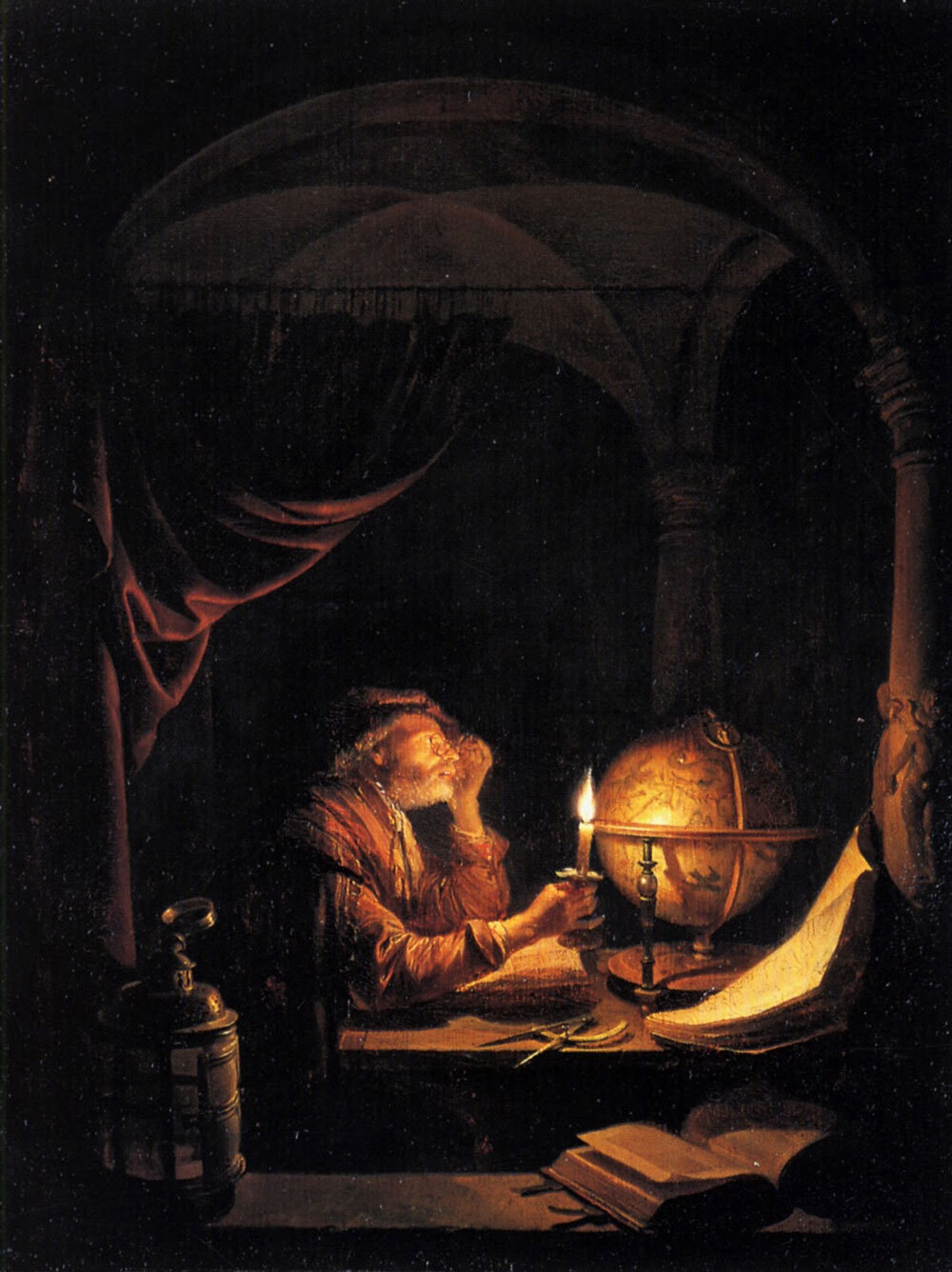Hey all, Ernie here with a piece from Fahad Sperinck, who is making his second appearance in the newsletter after writing a great piece on death metal and normalcy. Check out his latest below:
Today in Tedium: The days are darkening, the mercury dropping, and the pumpkins a-glowing; this weekend, the small hand goes back an hour. Most of us will devour that precious extra hour of sleep like a bear falling on a baby seal. (Okay, sure, there’s something else happening within the next week that might keep you up at night—but enough existential anxiety.) Just for tonight, allow yourself to savor the descending twilight and drop into a moodier state of mind. As you lie in bed this weekend, take a moment to reflect on how human sleep—your sleep—has been molded by modernity. Your great-grandfather, like most good postindustrial citizens, probably went to bed around 10pm and woke at 6am, but his great-grandfather almost certainly didn’t. Today’s Tedium dissects the rhythms of the dark. — Fahad @ Tedium
Keep Us Moving! Tedium takes a lot of time to work on and snark wise about. If you want to help us out, we have a Patreon page where you can donate. Keep the issues coming!
We accept advertising, too! Check out this page to learn more.

What sleep used to be like 400 years ago
It’s a rainy day in late October, 1637. You sit weaving at a loom, the rising and falling treadles clacking over the downpour outside the window. The sky clears an hour before dusk, and satisfied with your daily quota of eight yards, you stop to wander round a local wood, forage for wild mushrooms, and watch a public hanging. Two hours after sunset, you retire to bed. And yet, around midnight, something steals you away from sweet oblivion—but what? You wake up, light a candle and tobacco pipe from the fireplace embers. You sit by the bed to check on your poorly wife. An hour passes in pleasant chat, then half an hour in routine maintenance on the lathe, and eventually, the waning candlelight entices you back to bed, where you collapse lifeless till morning.
This account is based on a legal deposition of Jon Cokburne, a seventeenth-century Scottish weaver, who claimed on the night in question to have “gottin his first sleip and awaiking furth.” Some colorful details have been added from other historical records. But the chronology of the night has been kept faithful—for, though his cottage walls are thin, it isn’t noise that wakes him. Nor is it the urge to urinate or smoke, though each is a welcome relief. And lest we believe Jon Cokburne some kind of medical anomaly, it is worth noting that almost everyone in his village is up and active at the dead of night.
In preindustrial times, Europeans typically had two blocks of sleep, each three to four hours in length, joined by an hour or more of wakefulness in the dark. There was the first sleep, often called the “dead sleep,” followed by the second, or “morning sleep.” If it was given any name, the intervening period was usually referred to as “the watch.” Reams of evidence attest to this mysterious rhythm, much of it from diaries and official documents. The eighteenth-century diarist Robert Sanderson used to sit and smoke a pipe when kicked out of his “first sleepe” by a barking dog, and students needing to work by night were advised by a Bath doctor to do so after the first sleep, when they would be “in some measure refreshed”.
A variety of rustic activities seemed to await the midnight riser: chores, study, chatting with neighbors, drinking (or brewing) ale, praying, and even having sex, with one physician recommending the time between the first and second sleeps as the ideal time to conceive. The practice was so common that fictional characters used to talk of the second sleep as if it was unremarkable. The odd thing is not that we used to do this—more that any mention of the practice virtually disappeared in the twentieth century. If it wasn’t for the work of historian A. Roger Ekirch, who spent two decades compiling a study of our nocturnal habits in At Day’s Close: Night In Times Past, this historical curio would have been forever lost to the deep recesses of time.

Lovemaking was a common midnight pastime. ‘The Idle Prentice Returned from Sea and in a Garret with a Common Prostitute’, by William Hogarth, 1747 (via The Met)
How “segmented sleep” went out of style
Segmented sleep, as it is now called, is thought to be prehistoric in humans. The discontinuity between the sleep of modern humans and our closest animal relatives has long been a puzzle in biology; a biphasic sleeping pattern is more appropriate to mammals our size living in natural light settings. Chimpanzees are awake for about 20% of their sleep period, and biphasic patterns of activity are common to many other mammals, birds, and even insects. With our obvious penchant for monophasic sleep, then, for most of the last century, biologists have reluctantly concluded that humans are fundamentally different from other organisms. What else could explain that we, seemingly alone in the animal kingdom, consolidate sleep into one phase?
In other words, how did segmented sleep go from common practice to dusty footnote? A decline in popularity can be traced around the development of gas street lamps in the early nineteenth century. Subsequent development of the incandescent light bulb by Thomas Edison, that great American enemy of sleep, only compounded problems.
It began, as it always does, with the aristocracy. Robbed of the only cue they had to go to bed—the setting of the sun and the fading of the light—these raucous revelers stayed up later and later into the night, setting a trend which percolated to the lower rungs of society as lighting became more commonplace. An assault on our primordial rhythm has been in progress ever since. We hold the distinction of being the only animals that artificially expand our photoperiod—the period of time each day that an organism receives light. Humans have managed to engineer perpetual summer by using artificial light to extend our days to 16 hours, whatever the season, leading some scientists to wonder whether this constant illumination is shoehorning sleep into an unnaturally small window.
In the early 90s, one chronobiologist set out to investigate this hypothesis—namely, that artificial light was the proximate cause of the disappearance of segmented sleep. Thomas Wehr recreated premodern lighting conditions by exposing seven subjects to indoor and outdoor light for 10 hours a day—about the natural photoperiod in London or New York on Halloween—and confining them to total darkness for 14 hours. The experiment lasted for four weeks. For the first few days, the subjects slept for eleven hours a night, likely repaying a sleep deficit. But by the fourth week, they were getting eight hours in two separate blocks, in a pattern virtually identical to the preindustrial slumberer.

‘Scholar with a Globe’ by Gerrit Dou, c. 1650 (via TuttArt)
What’s more, the subjects had an uncommon cocktail of hormones in their midnight waking hours. Relatively low cortisol, and heightened prolactin production, gave rise to a calm wakefulness, prompting Wehr to remark that they were in an “altered state of consciousness not unlike meditation”. Jesse Barron, a journalist who fell into an accidental segmented sleeping pattern after a spell of insomnia in 2016, concurred. Ordinarily a neurotic New Yorker, for whom wakefulness and anxiety were synonymous, he instead found a hidden reserve of calm in the small hours. For a while, midnight Netflix binges ensued, but they were soon followed by the recovery of a lost habit of reading physical books.
Not everyone is convinced. Neuroscientist and doyen of sleep Matthew Walker argues that a true human biphasic sleep pattern consists of one long bout of nocturnal sleep with a mid-afternoon nap. Walker points to an impressive list of evidence—the afternoon nap coincides with a widely observed dip in alertness, for example. But sleep patterns develop over millennia; it seems plausible that they could, and should, be tied to latitude. The siesta cultures he cites all live on or below the Mediterranean Se, with at least two more hours of winter light than the Western Europeans who loved a broken night’s sleep. Why waste precious daylight napping when you are locked in eternal night—in eighteen hours of darkness?
“A channel of communication between dreams and waking life has gradually been closed off. Modern humans seem to have lost touch with the wellspring of myths and fantasies.”
— Thomas Wehr, the architect of the segmented sleep experiment, arguing in his 1992 paper that we ignore our biology at our peril.
Perfect sleep might be imperfect
Where does all this contradiction leave a competitive sleeper? Walker leads the vanguard of modern sleep prophets, all of whom agree on one thing: you’re not getting enough. In support, they present a litany of ailments that read like a hypochondriac’s vision of hell. A lack of sleep makes you dumber, uglier, fatter, sadder, and sicker. It’s raising your chances of getting cancer, diabetes, and Alzheimer’s, they say. If you’re a guy, it’s making your testes smaller (no, really) and if you’re a girl, no doubt it does something equally frightening. Beware—a huge question mark hangs over some of these claims.
On the other side of the debate, there are the Ubermen: ideological descendants of Thomas Edison, who regard anyone wanting eight hours a night as incorrigibly lazy. Ubermen claim to subsist on two daily hours of slumber, taken in six to eight 20-minute naps. Edison famously declared that he needed only three to four hours of sleep at night, and so begrudging was he of the whole affair that he predicted its eventual obsolescence: “In the old days man went up and down with the sun. A million years from now we won’t go to bed at all. Really, sleep is an absurdity, a bad habit. We can’t suddenly throw off the thraldom of the habit, but we shall throw it off.”
The imperfection of segmented sleep is surely one of its main attractions. It offers time to sit and stare into the darkness, in a half-hypnotic state, time to free-associate; it is an antidote to relentless productivity. A lack of light forces us to submit gently to the demands of the night, and be blissfully idle. We again become intimate with the soothing chaos of the dark, like coming back to an ancestral home.
Perhaps it’s time to reclaim our long lost second sleep.
--
Correction: The original version of this article contained a quote falsely attributed to Nikola Tesla. Thanks to Alexander Magoun, Outreach Historian at IEEE, for pointing out this error, and thanks to Paul Israel, Director of Thomas A. Edison Papers at Rutgers University, for providing an alternative quote.
Find this one an interesting read? Share it with a pal!





